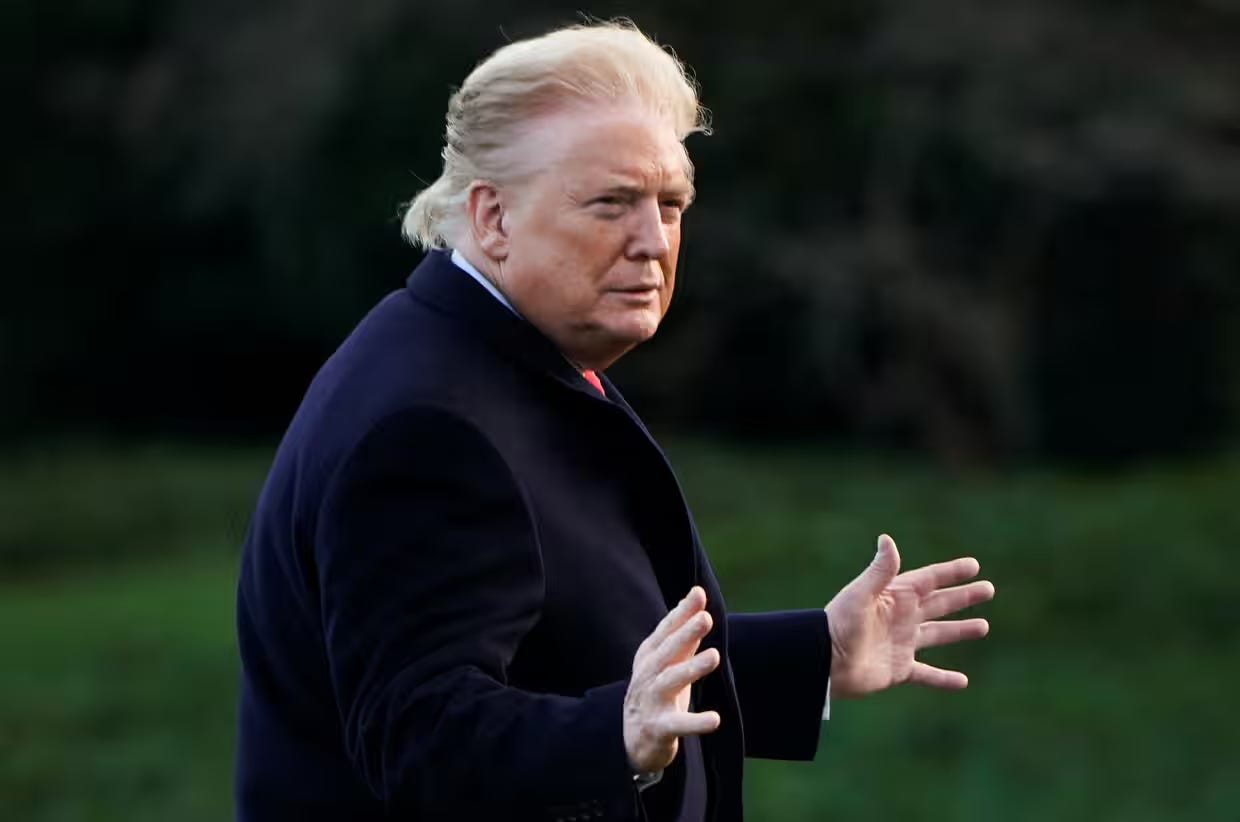Donald Trump Has Done It Again, and It is "Driving" Me Crazy!
He has once again provided an exception to one of my most strongly held economic beliefs, this time in regards to my opposition to asymmetric information.

I have been inspired to write again!
New news came out today about Donald Trump announcing the end of trade talks with Canada over the Digital Services Tax (DST), as reported here by CityNews:
Prime Minister Mark Carney says he did not speak Friday with Donald Trump before the U.S. president announced a sudden end to trade negotiations in response to Ottawa’s plans to push ahead with a digital services tax at the end of the month.
On his platform Truth Social, Trump wrote that he was “terminating all discussions on trade with Canada” because of the tax, set to apply this Monday to major American online companies such as Amazon, Google and Airbnb.
Trump wrote Friday afternoon that Washington will notify Canada about new tariff rates required “to do business with the United States” within the next week.
An hour later, Carney told reporters he had not spoken with Trump that day.
This news got me to thinking about signaling in Economics, for example how it relates to dealing with the problem of asymmetric information — a topic I covered in my article from yesterday regarding Alberta Premier Danielle Smith selling us “lemons” in the debate over Alberta separating from Canada:
Economists tend to believe a lack of information is a bad thing, but once again Trump has made me question this belief, because now I have found an argument in favour of blowing some fog into his information set about Canada.
Let me explain.
When asymmetric information is a significant problem, it can exist either before or after the transaction occurs. In terms of adverse selection, it exists when one party has both the incentive and the ability to hide their true characteristics from the other party (it exists before the transaction occurs). It is a problem of hidden information rather than hidden action. In fact, the Lemons Problem is one of adverse selection.
For example, insurance companies know people who have children, health problems, more dangerous driving habits, or greater financial problems are more likely to buy insurance. Unfortunately, they cannot identify actual “high-risk” people before the insurance is purchased, so they charge everyone who fits these characteristics higher premiums than they charge those who do not fit these characteristics.
As such, the “low-risk” people will pay too much for insurance and get too little insurance coverage; the high-risk people will pay too little for insurance and receive too much coverage.
To examine this problem more rigorously, assume the following:
Drivers can be divided into Low Risk (L) and High Risk (H)
All drivers otherwise are exactly identical
Each driver is completely informed that they are either H or L
Hidden characteristics: drivers cannot convey their risk to insurers without cost
Also, let:
qL be the probability that a low-risk driver causes a collision
qH be the probability that a high-risk driver causes a collision
L be the loss from any collision
The cost of the loss is borne by the driver responsible for the collision
Thus, the full-information equilibrium is where we pay a price proportional to risk:
pL = qLL
pH = qHL
For example, if one gets into an accident two out of every five times they drive — or 40% of the time — then their expected (average) liability is:
(0+0+0+L+L) / 5 = 0.4L
Thus, that is what they will pay each time they drive.
However, information is flawed in real life, so an insurance company will engage in fancy pricing practices to minimize their share of the risk.
One such practice is known as a pooling equilibrium, whereby the insurance company charges everyone the same price regardless of (the unobserved) risk level, based on what it expects is the proportion of high-risk drivers. Thus, low-risk drivers will pay too much while high-risk drivers will pay too little.
Since this strategy could “drive” low-risk drivers out of the insurance market, thus increasing the proportion of high-risk drivers even more, governments can (and do) require every driver to have some minimum level of insurance. While this is still a pooling equilibrium where the good drivers subsidize the bad ones, the increased number of good drivers lowers the cost of insurance for everyone.
Alternatively, the insurance company could create a separating equilibrium in which it enables low-risk drivers to signal their relative risk level. For example, when I got my driver’s license in the early 1990s, I was able to reduce my insurance premiums by graduating from Young Drivers of Canada. In other words, my certificate from this driving school was a signal that I was a low-risk driver, which I otherwise would not have been able to provide without a good driving record.
So going back to Trump’s latest hissy fit, the Carney government needs to be very careful regarding what signals it sends in response to Trump’s latest tantrum. For example, it would be a very bad optics to cancel the DST now — even if it was for completely unrelated reasons — because it would send a signal to Trump that his bullying is effective.1
And what does a bully do when you give them your lunch money today? They take that as an invitation to take it again tomorrow.
To put it another way, following an appeasement strategy will send signals to Trump that he has significant bargaining power over us, which will help create a separating equilibrium that puts us into a category where we will have to pay increasingly high “premiums” to him.
To be clear, Prime Minister Mark Carney should not sink to Trump’s level and get in a pissing contest with him on social media. Our leaders need to remain calm, cool, and professional, and that is something Carney has been doing well since becoming PM.
But at the same time, we cannot be seen as weak and submissive by aiming for appeasement, regardless of how much we rely on the U.S. for our economic wellbeing. That would send a signal to Trump that his current strategies are winning ones, which would incentivize him to hammer us even more.
I instead want to create a relationship with the U.S. where asymmetric information is tilted more in our favour — one where we convince Trump and his acolytes that pushing Canada around is not in their best interest.
In game theoretic terms, we need to convince the bad people that we are a lot less rational than is actually true. We need to change the rules and payoffs of the game by convincing them we will always be willing to harm ourselves more than they could ever harm us.
In short, we should not make ourselves look like U.K. Prime Minister Keir Starmer at the recent G7 meetings:

Thank you for reading this post to the end. If you value what I write, then I ask you to please consider a paid subscription, so I can continue to write more and better articles for you. Regardless, I am happy you are here!
This is similar to a problem faced by the U.S. Federal Reserve whenever Trump publicly screams for lower interest rates: even if it was going to lower interest rates anyway, doing so now would only make it look subservient to Trump, thus threatening how markets perceive its independence from the government.





Trump is impossible to deal with. It doesn't matter if you ever do come to terms and develop good relations he will turn it on its head on a whim at any imagined slight, provocation or perceived opportumnity. It literally is impossible. We have to decide if we want to be a vassal or sovereign.